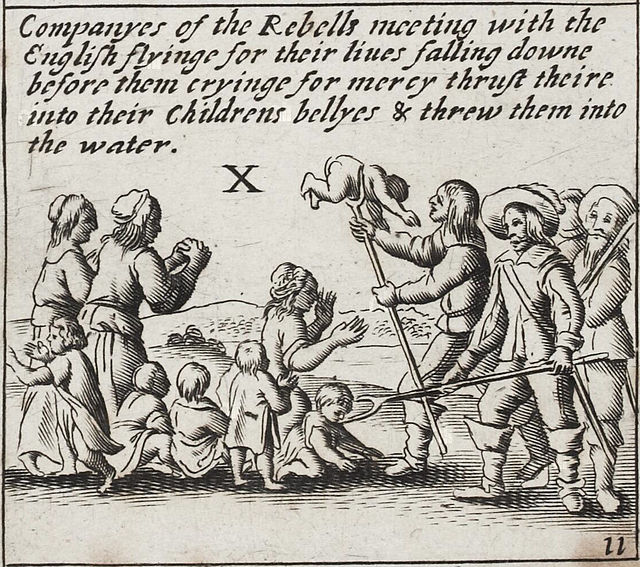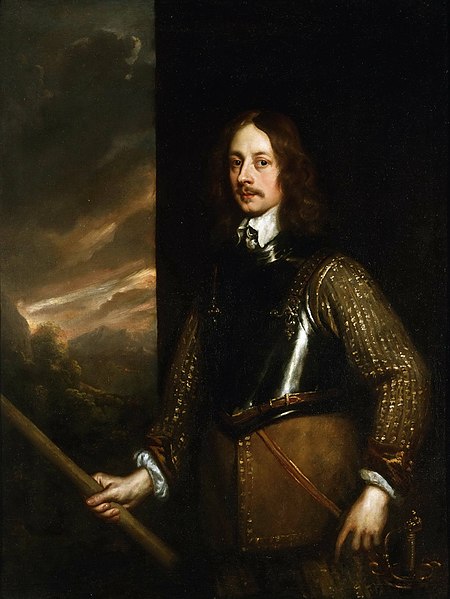Atrocity propaganda is the spreading of information about the crimes committed by an enemy, which can be factual, but often includes or features deliberate fabrications or exaggerations. This can involve photographs, videos, illustrations, interviews, and other forms of information presentation or reporting.
Accounts of Irish atrocities during the Rebellion of 1641 are now dismissed as propaganda, but led to real massacres.
The PFM-1 mine was claimed to have been deliberately designed to attract children
The Irish Rebellion of 1641 was an uprising by Catholics in Ireland, whose demands included an end to anti-Catholic discrimination, greater Irish self-governance, and return of confiscated Catholic lands. Its timing was partially driven by the dispute between Charles I and his opponents—the English Parliamentarians and Scottish Covenanters—which the rebels feared would lead to an invasion and further anti-Catholic measures. Beginning as an attempted coup d'état by Catholic gentry and military officers, it developed into a widespread rebellion and ethnic conflict with English and Scottish Protestant settlers. It led to the 1641–1653 Irish Confederate Wars, part of the Wars of the Three Kingdoms, with up to 20% of the Irish population becoming casualties.
English atrocity propaganda of alleged rebel attacks on women and children
James Butler, Duke of Ormond, who commanded the royal army during the rebellion



